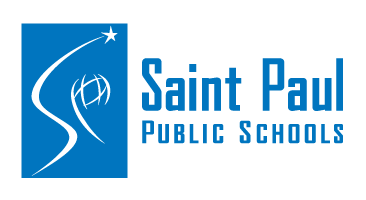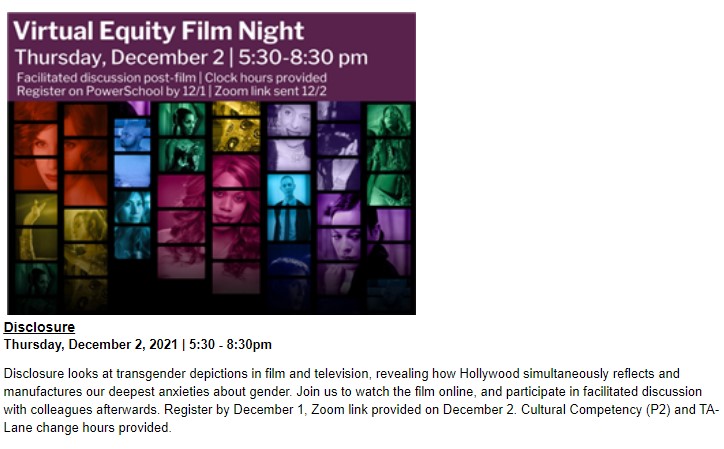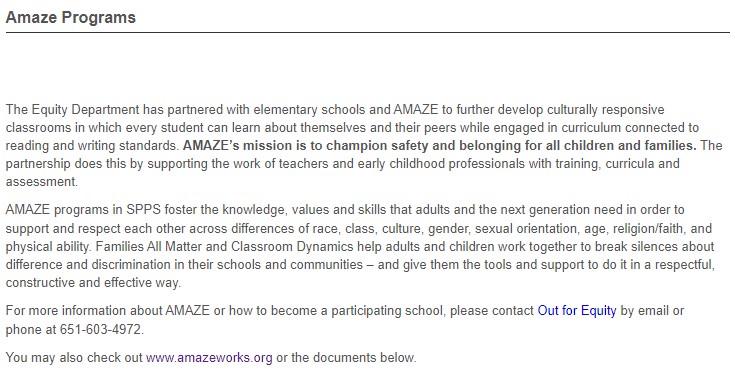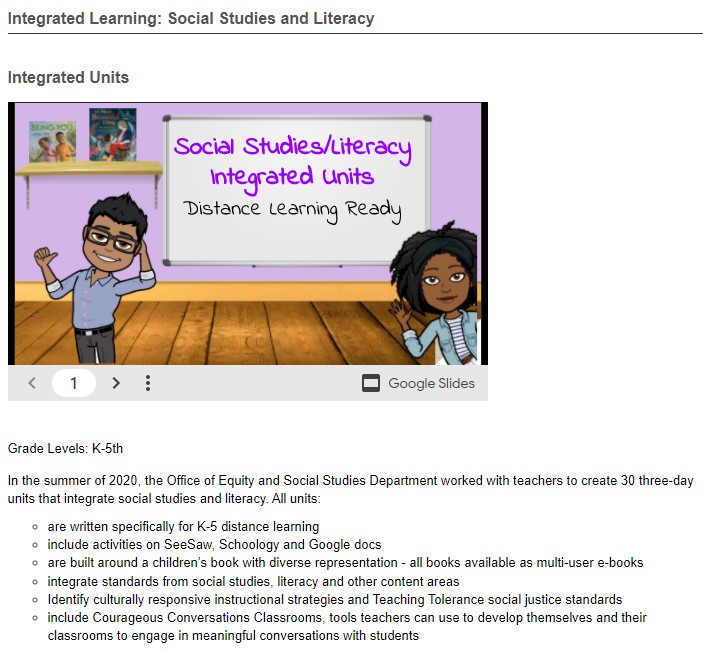
Saint Paul Public Schools promotes “LGBTQ+” material; partners with organizations that target toddlers with PRIDE resources and provide free “chest binders” to transgender individuals
Incidents
Saint Paul Public Schools promotes the mission of the district’s “Office of Equity” as an effort “to interrupt systems of marginalization” and to ensure that “staff are racial equity leaders.” The school district’s website features resources promoting equity, including news and updates for the equity department. The website often promotes equity film nights where movies like “Disclosure” are aired to students. The school district specifically describes “Disclosure” as a film that “looks at transgender depictions in film and television, revealing how Hollywood simultaneously reflects and manufactures our deepest anxieties about gender.”

The school district has partnered with the organization AMAZE “to further develop culturally responsive classrooms in which every student can learn about themselves and their peers while engaged in curriculum connected to reading and writing standards.” The partnership appears to target the district’s elementary schools with AMAZE offering several curricula for the school district to potentially use. One curriculum that the organization promotes in a document posted on the school district’s website states that it “covers such diversity themes as: race/ethnicity, adoption, disabilities, divorce/blended
families, socioeconomics, immigration, gay lesbian and transgender family members, aging, religion and families who are apart due to incarceration, deployment, foster care or death.”

AMAZE promotes “PRIDE resources” for children as young as toddlers on its website. In a document titled “Understanding Gender Diversity,” the organization provides caregivers with lessons to help “guide conversations with children on gender diversity, including gender identity and expression.” The lessons include books like My Princess Boy and When Aidan Became a Brother. AMAZE describes My Princess Boy as a story “about a little boy who loves the color pink, sparkly things, and being a princess.” The organization describes When Aidan Became a Brother as about a girl who transitioned to being a boy. Both books are aimed at children as young as 4 years old.
The school district offers resources for “LGBTQ+” students. One resource is a document that tells students to not assume “someone’s gender” and that provides assistance for students wanting to change their gender or pronouns on school records. The school district promotes numerous partners and events for “LGBTQ+” youth. Two events touted by the school district are called “Little Rainbows: Gender fabulous folks 12 & under” and “Gender Jam: Trans Teens Safe Space.”
A partner listed on the school district’s website is OutFront Minnesota. The organization has an “Educational Equity Department” that pushes “to decrease intersectional inequity and increase LGBTQ+ inclusivity in classrooms, schools, districts, and youth organizations.” OutFront Minnesota also has resources available so that people can acquire free “chest binders” for transgender individuals.


The school district’s Center for Equity and Culture promotes resources for educators to implement equity and “social justice” into social studies and literacy classes for kindergarten through the fifth grade. The Center for Equity and Culture specifically mentions educators using “social justice standards” to teach students.

Saint Paul Public Schools has a “Gender Inclusion Policy” page with a poster that states one in six students in the school district identify as “lesbian, gay, bisexual, or questioning (LGBQ).” The poster also states that 3.5 percent of students in the school district “identify as transgender.” The bottom of the poster advises teachers to “highlight lesbian, gay, bisexual, transgender, and queer people in curriculum.”
The “Gender Inclusion Policy” page also has four policy points that the school district follows:
- Respect all students’ gender identity and gender expression by honoring the right of students to be identified and addressed by their preferred name and pronoun.
- Prohibit, within academic programming, the separation of students based upon gender unless it serves as a compelling pedagogical (instructional) tool.
- Permit all students to participate in co-curricular and extracurricular activities in a manner consistent with their gender identity including, but not limited to, intramural and interscholastic athletics.
- Provide all students access to facilities that best align with students’ gender identity.
On July 16, 2013, the school district adopted a “Racial Equity” policy that “confronts the institutional racism that results in predictably lower academic achievement for students of color than for their white peers.” The school district also acknowledged in the policy that perceived “complex societal and historical factors contribute to the inequity within our school district.”
The school district offers a course for educators to create “Anti-Racist Classrooms.” The course is built around the book Raising Race Questions: Whiteness and Inquiry in Education. The description of the course states that “learning about race and Whiteness can be confusing, contentious, and frightening, particularly for White people.” The description also states that the course will “address the necessity for educators to have a strong personal racial identity, as well as why race matters in schools and school districts.”

Stay Informed
